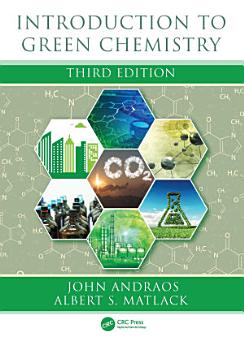Introduction to Green Chemistry: Edition 3
About this ebook
Copiously illustrated with more than 800 figures, the Third Edition provides an update from the frontiers of the field. It features supplementary exercises at the end of each chapter relevant to the chemical examples introduced in each chapter. Particular attention is paid to a new concluding chapter on the use of green metrics as an objective tool to demonstrate proof of synthesis plan efficiency and to identify where further improvements can be made through fully worked examples relevant to the chemical industry.
NEW AND EXPANDED RESEARCH TOPICS
- Metal-organic frameworks
- Metrics
- Solid acids for alkylation of isobutene by butanes
- Carbon molecular sieves
- Mixed micro- and mesoporous solids
- Organocatalysis
- Process intensification and gas phase enzymatic reactions
- Hydrogen storage for fuel cells
- Reactive distillation
- Catalysts in action on an atomic scale
UPDATED AND EXPANDED CURRENT EVENTS TOPICS
- Industry resistance to inherently safer chemistry
- Nuclear power
- Removal of mercury from vaccines
- Removal of mercury and lead from primary explosives
- Biofuels
- Uses for surplus glycerol
- New hard materials to reduce wear
- Electronic waste
- Smart growth
The book covers traditional green chemistry topics, including catalysis, benign solvents, and alternative feedstocks. It also discusses relevant but less frequently covered topics with chapters such as "Chemistry of Long Wear" and "Population and the Environment." This coverage highlights the importance of chemistry to everyday life and demonstrates the benefits the expanded exploitation of green chemistry can have for society.
About the author
John Andraos earned a Ph.D. in physical organic chemistry in 1992 from the University of Toronto. His current research is broadly defined as reaction optimization and discovery including: the application of reaction metrics for analysis of organic reactions and total syntheses of organic molecules; optimization of recycling and reagent retrieval protocols; discovery of new multi-component reactions by structural combinatorial techniques; unified mathematical analysis of green metrics; molecular and topological complexity and connectivity; and graph theoretical applications to sustainability research. He is the author of 70 peer reviewed journal articles, 11 book chapters, and 4 books on green chemistry.





